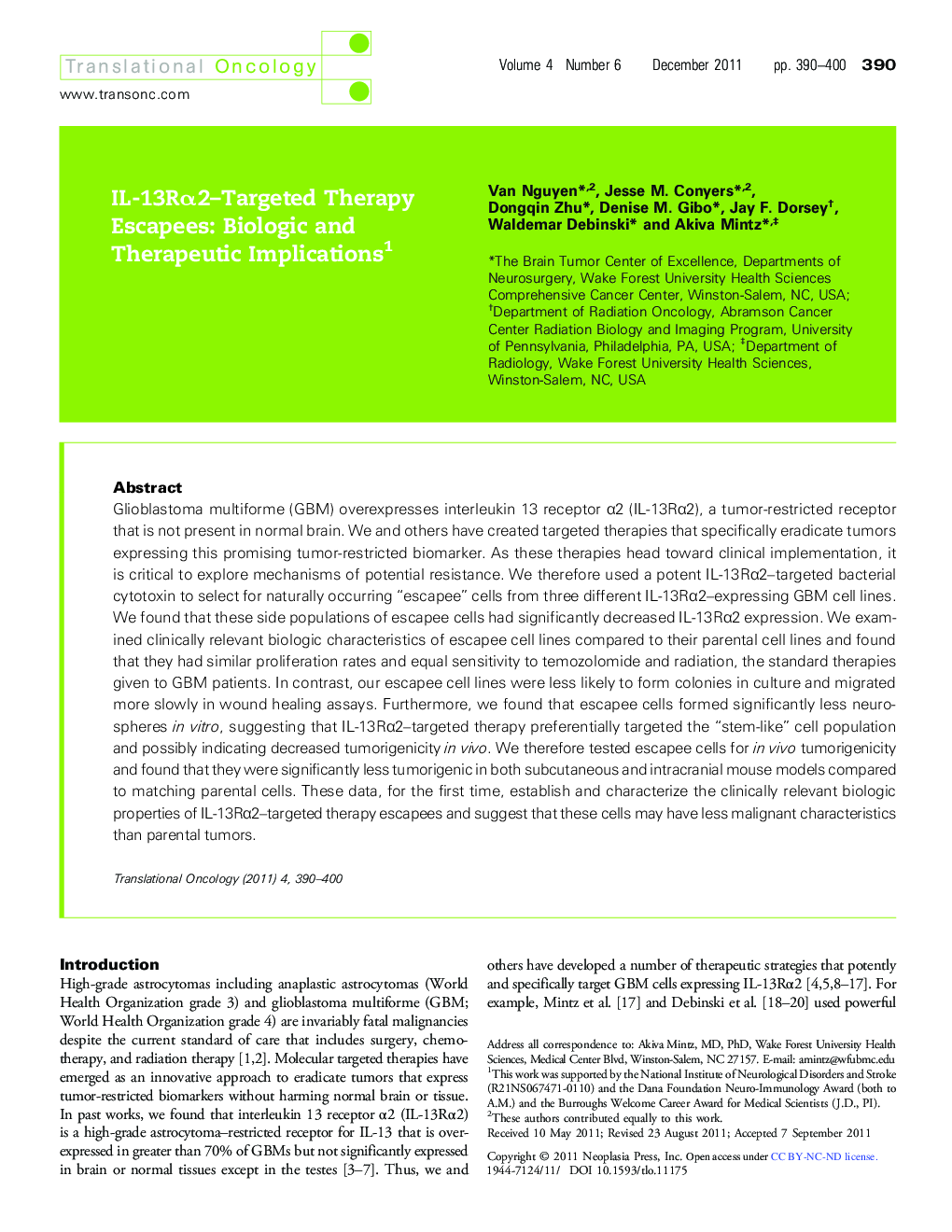| Article ID | Journal | Published Year | Pages | File Type |
|---|---|---|---|---|
| 2163906 | Translational Oncology | 2011 | 11 Pages |
Glioblastoma multiforme (GBM) overexpresses interleukin 13 receptor α2 (IL-13Rα2), a tumor-restricted receptor that is not present in normal brain. We and others have created targeted therapies that specifically eradicate tumors expressing this promising tumor-restricted biomarker. As these therapies head toward clinical implementation, it is critical to explore mechanisms of potential resistance. We therefore used a potent IL-13Rα2-targeted bacterial cytotoxin to select for naturally occurring “escapee” cells from three different IL-13Rα2-expressing GBM cell lines. We found that these side populations of escapee cells had significantly decreased IL-13Rα2 expression. We examined clinically relevant biologic characteristics of escapee cell lines compared to their parental cell lines and found that they had similar proliferation rates and equal sensitivity to temozolomide and radiation, the standard therapies given to GBM patients. In contrast, our escapee cell lines were less likely to form colonies in culture and migrated more slowly in wound healing assays. Furthermore, we found that escapee cells formed significantly less neurospheres in vitro, suggesting that IL-13Rα2-targeted therapy preferentially targeted the “stem-like” cell population and possibly indicating decreased tumorigenicity in vivo. We therefore tested escapee cells for in vivo tumorigenicity and found that they were significantly less tumorigenic in both subcutaneous and intracranial mouse models compared to matching parental cells. These data, for the first time, establish and characterize the clinically relevant biologic properties of IL-13Rα2-targeted therapy escapees and suggest that these cells may have less malignant characteristics than parental tumors.
